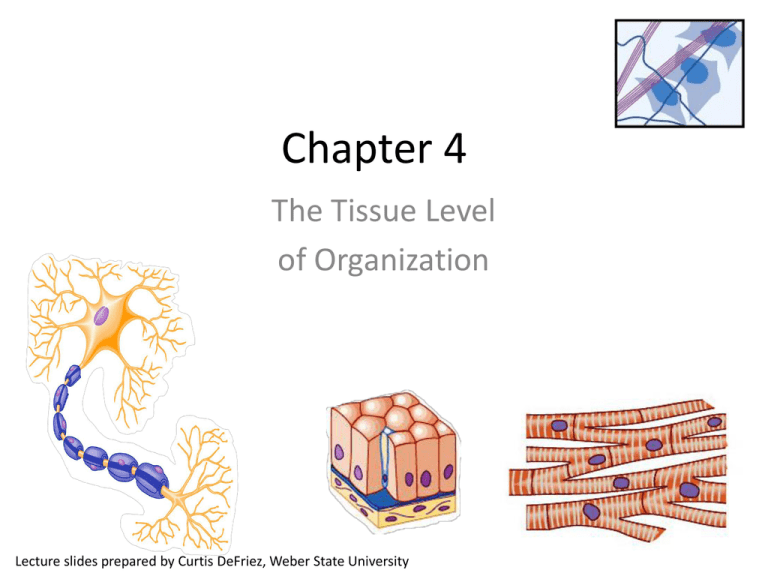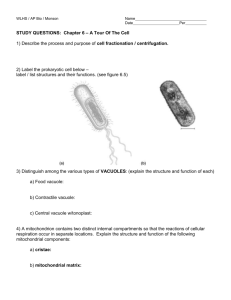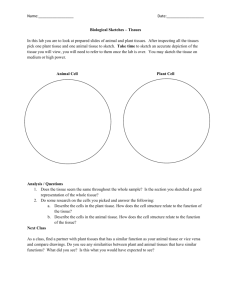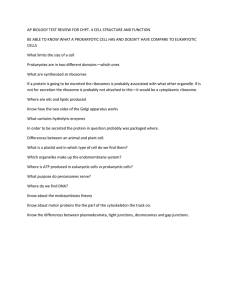Chapter 4
advertisement

Chapter 4 The Tissue Level of Organization Lecture slides prepared by Curtis DeFriez, Weber State University Tissues • Tissues are a group of cells with a common embryonic origin that function together to carry out specialized activities. – They include various types, ranging from hard (bone) to semisolid (fat) to liquid (blood). Tissues • Histology is the study of the microscopic anatomy of cells and tissues – it is a branch of pathology. – Of the 10 trillion cells in our body, no single cell type can said to be “typical”. A trained histologist can recognize over 200 distinct human cell types under the microscope and is able to distinguish a cell from pancreatic tissue as opposed to a cell from the skin. • Each cell type has features particular to its function. Intracellular Junctions • Tissues are formed by grouping cells together using a variety of Intercellular Junctions . – Intracellular Junctions connect adjacent cells mechanically at the cell membranes or through cytoskeletal elements within and between cells. Intracellular Junctions • Tight Junctions are found where a leakproof seal is needed between cells. – They keep materials from leaking out of organs like the stomach and bladder. Intracellular Junctions • Adherens Junctions make an adhesion belt (like the belt on your pants) that keeps tissues from separating as they stretch and contract. • Cadherin is a glycoprotein that forms the belt-like “plaque”. Intracellular Junctions • Desmosomes act as “spot welds”. They also use cadherin glycoprotein (plus intermediate filaments) to hook into the cytoplasm. Intracellular Junctions • Hemidesmosomes are half-welds that join cells to the basement membrane. Intracellular Junctions • Gap Junctions are pores (connexons) that allow small substances like ions to pass between cells. If one of the cells gets sick or dies, these seal like a hatch to prevent damage to other cells. Intracellular Junctions Interactions Animation • Intracellular Junctions You must be connected to the internet to run this animation The 4 Basic Tissues • Of all the cells in the body, they combine to make only 4 basic tissue types: – Epithelial tissues – Connective tissues – Muscular tissues – Nervous tissues The 4 Basic Tissues • Epithelial tissues cover body surfaces and form glands and line hollow organs, body cavities, and ducts.






